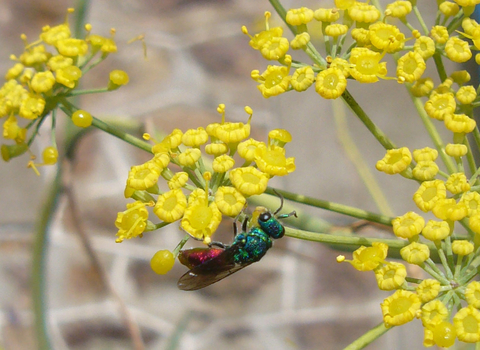
Ruby-tailed Wasp ©Skol-louarn
Ruby-tailed wasp
If seen up close, the glittering Ruby-tailed wasp is, perhaps, one of the UK's most beautiful insects. A solitary wasp, it can be found in sandy and rocky habitats like quarries, outcrops and walls.

Ruby-tailed Wasp ©Skol-louarn